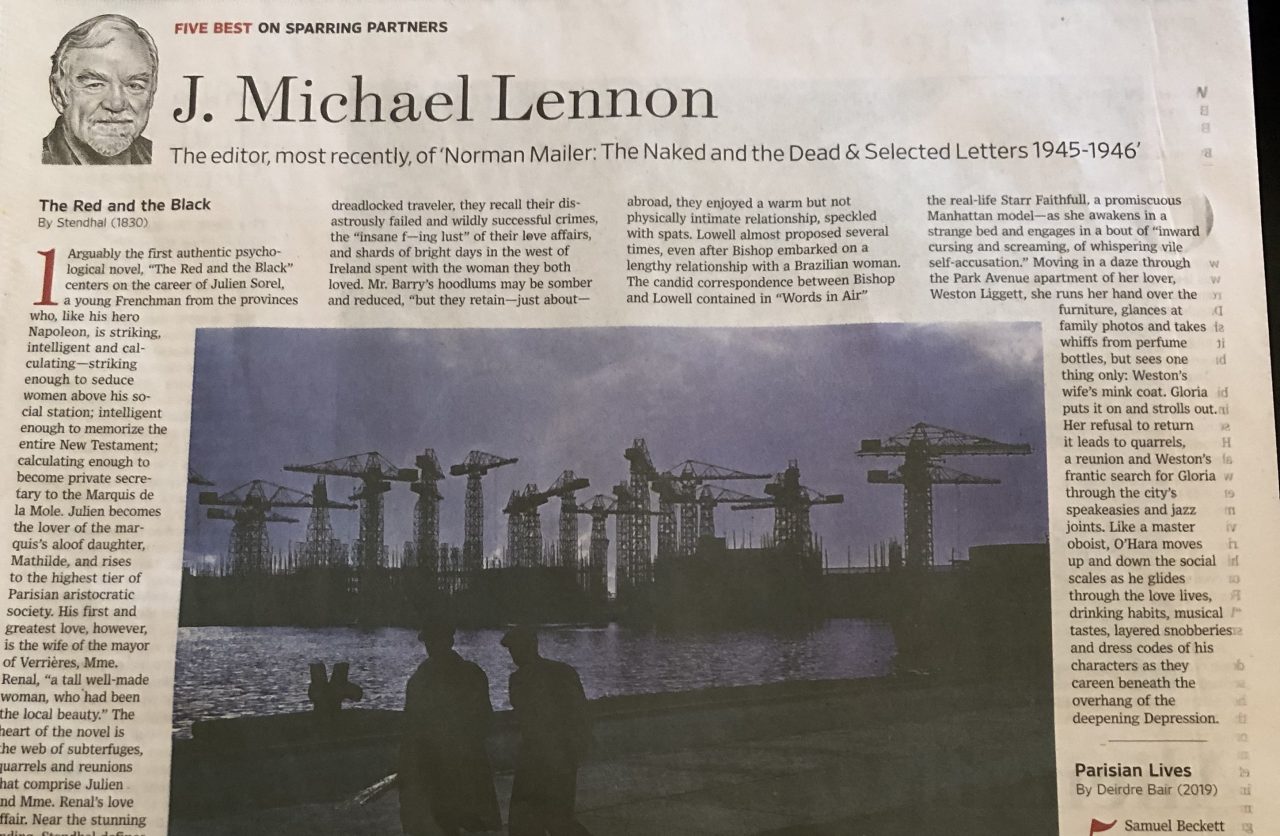The Red and the Black By Stendhal (1830)
1. Arguably the first authentic psychological novel, “The Red and the Black” centers on the career of Julien Sorel, a young Frenchman from the provinces who, like his hero Napoleon, is striking, intelligent and calculating —striking enough to seduce women above his social station; intelligent enough to memorize the entire New Testament; calculating enough to become private secretary to the Marquis de la Mole. Julien becomes the lover of the marquis’s aloof daughter, Mathilde, and rises to the highest tier of Parisian aristocratic society. His first and greatest love, however, is the wife of the mayor of Verrières, Mme. Renal, “a tall well-made woman, who had been the local beauty.” The heart of the novel is the web of subterfuges, quarrels and reunions that comprise Julien and Mme. Renal’s love affair. Near the stunning ending, Stendhal defines the novel as “a mirror carried along a high road. At one minute it reflects your vision of the azure skies, at another the mire of the puddles at your feet.” His finest novel is a handbook for both romantic dreamers and crass opportunists.
Night Boat to Tangier By Kevin Barry (2019)
2. Samuel Beckett’s “Waiting for Godot” comes like a banshee at readers of Kevin Barry’s lyrical novel: Two desperate, decrepit clowns waiting for someone who may never arrive. The whisky-vinegar talk of Maurice Hearne and Charles Redmond—hashish smugglers and longtime frenemies—echoes the thrust and parry of Beckett’s Gogo and Didi, updated to capture the lingo of the “crusty” New Age travelers who wander through the ghostly Algeciras boat terminal under the shadow of Gibraltar. As the two aging Irishmen wait for one dreadlocked traveler, they recall their disastrously failed and wildly successful crimes, the “insane f— lust” of their love affairs, and shards of bright days in the west of Ireland spent with the woman they both loved. Mr. Barry’s hoodlums may be somber and reduced, “but they retain—just about—a rakish air.” The lads know how to press on a wound, but they also console each other as they watch the night boats shuttle across the strait.
Words in Air Edited by Thomas Travisano and Saskia Hamilton (2008)
3. In 1947, Elizabeth Bishop, 35, met Robert Lowell, 29, and was smitten by this tall, rumpled Yankee who was handsome in “an almost old-fashioned poetic way.” He was the first person she’d ever met who really spoke to her about how to write poetry—“like exchanging recipes for making a cake,” she said. For the next 30 years, through alcoholic breakdowns, disastrous love affairs and extended periods abroad, they enjoyed a warm but not physically intimate relationship, speckled with spats. Lowell almost proposed several times, even after Bishop embarked on a lengthy relationship with a Brazilian woman. The candid correspondence between Bishop and Lowell contained in “Words in Air” delivers “the droll give-and-take of their affectionate serve and volley” on matters personal and poetic. Their letters are crammed with frank comments on each other’s poems. The collection, which “provides a window of discovery into the human and artistic development” of two of America’s greatest poets, crescendos with Bishop’s exasperation at Lowell’s deliberate misquoting of letters from his wife, and Lowell’s pointed rejoinder.
Butterfield 8 By John O’Hara (1935)
4. In this novel’s unforgettable opening scene, John O’Hara presents the woozy thoughts of 22-year-old Gloria Wandrous—based on the diaries of the real-life Starr Faithfull, a promiscuous Manhattan model—as she awakens in a strange bed and engages in a bout of “inward cursing and screaming, of whispering vile selfaccusation.” Moving in a daze through the Park Avenue apartment of her lover, Weston Liggett, she runs her hand over the furniture, glances at family photos and takes whiffs from perfume bottles, but sees one thing only: Weston’s wife’s mink coat. Gloria puts it on and strolls out. Her refusal to return it leads to quarrels, a reunion and Weston’s frantic search for Gloria through the city’s speakeasies and jazz joints. Like a master oboist, O’Hara moves up and down the social scales as he glides through the love lives, drinking habits, musical tastes, layered snobberies and dress codes of his characters as they careen beneath the overhang of the deepening Depression.
Parisian Lives By Deirdre Bair (2019)
5. Samuel Beckett and Simone de Beauvoir, two of the most celebrated writers of the 20th century, were close neighbors in Paris in the 1970s and ’80s. In this memoir, Deirdre Bair explains the challenges she faced in writing their separate biographies. She had to melt the stony silences of Beckett, who disallowed note-taking (she transcribed her memories after their meetings), and learn how to get around Beauvoir’s peremptory rules (which included taking extensive notes and sharing them with her). Beckett’s first words to her were: “So you are the one who is going to reveal me for the charlatan that I am.” At her initial meeting with Beauvoir, Bair was told, “we can discuss what I tell you if you need me to explain it, and that will be the book you will write.” Beckett said little, Beauvoir spoke volumes. With both, Bair endured lengthy ruptures, chilly meetings, and interference from families and friends. Her diplomatic prowess triumphed in the end, although it was threatened by the fact that her two subjects “cordially detested each other.”
Originally appeared in The Wall Street Journal, April 8–9, 2023.
